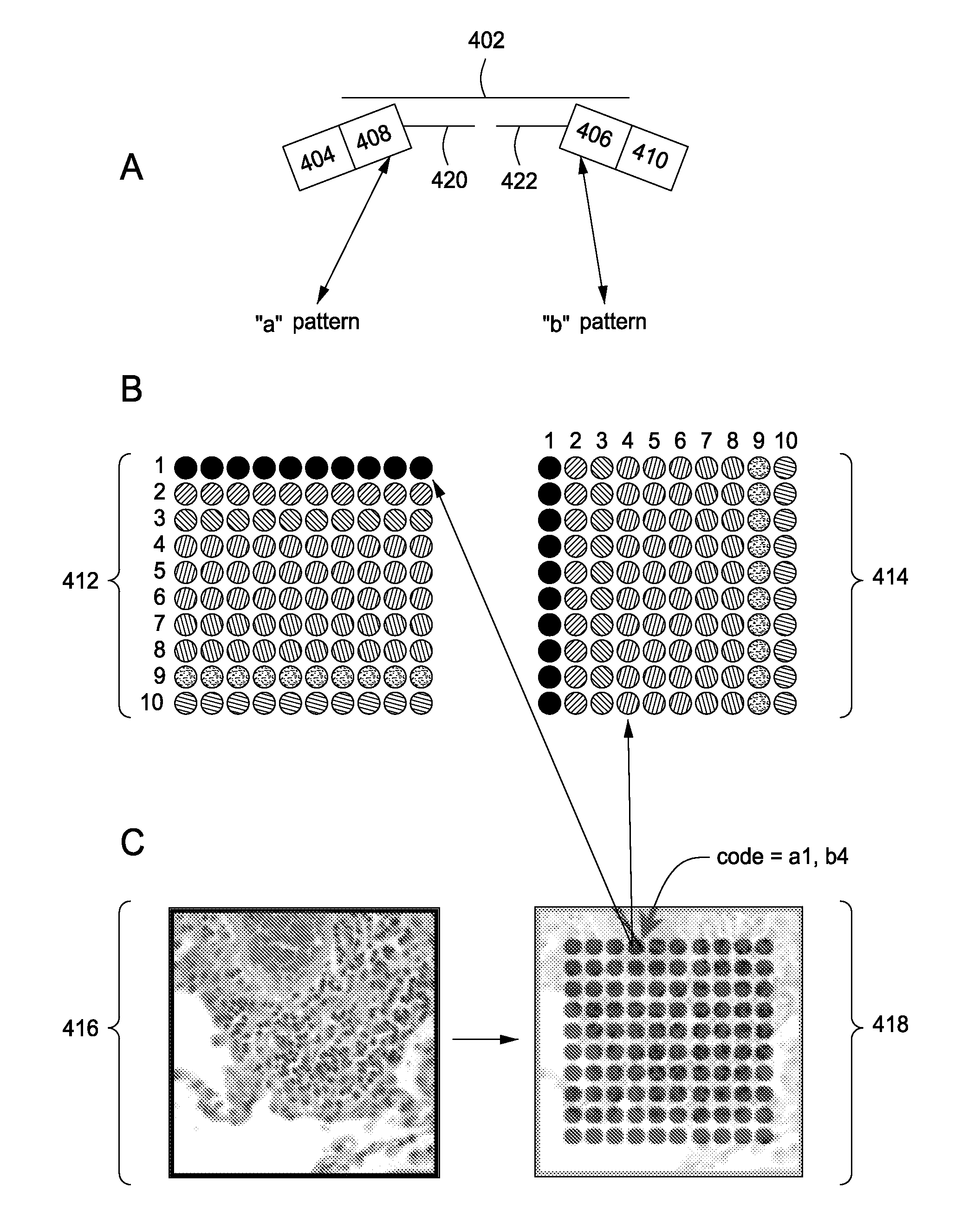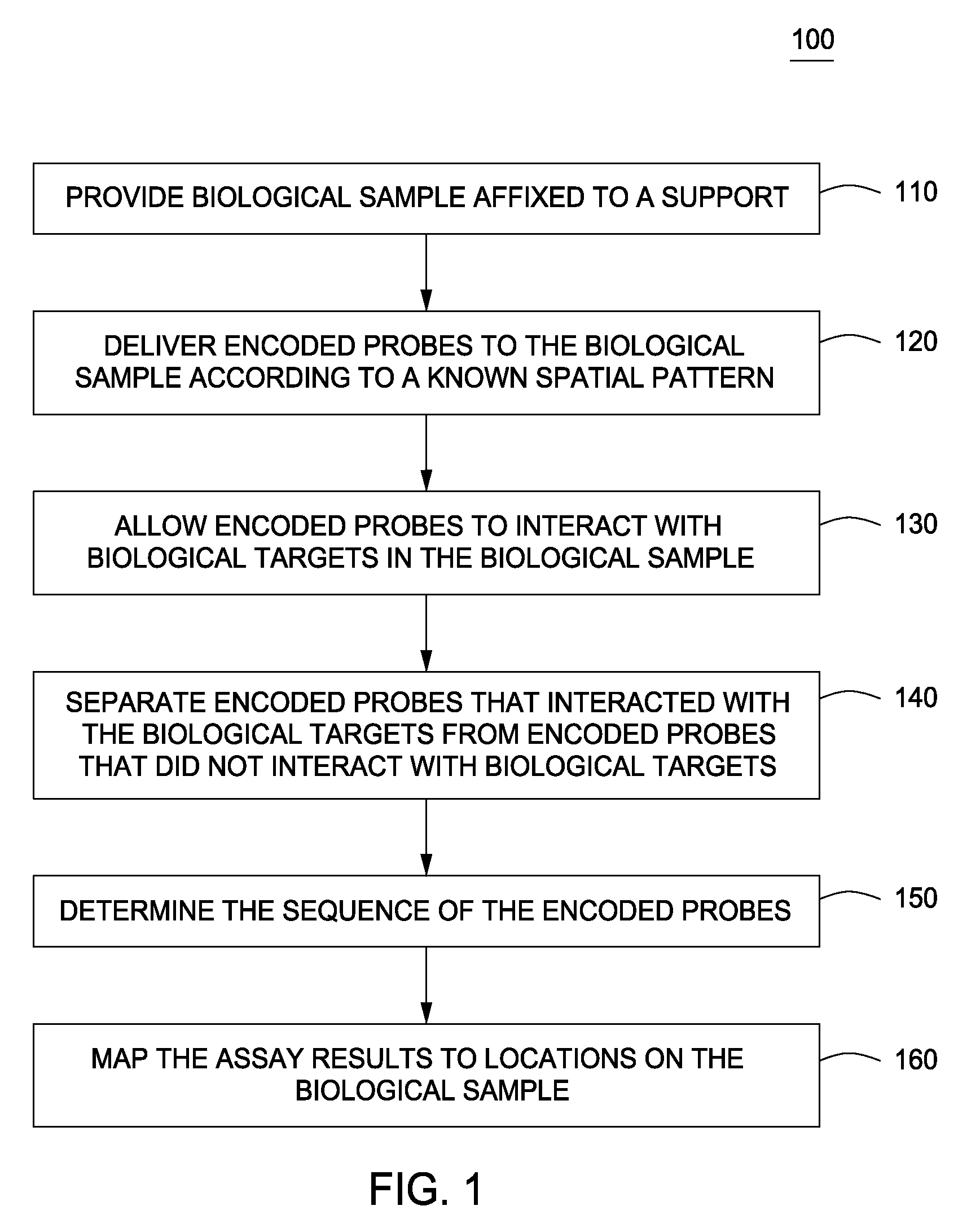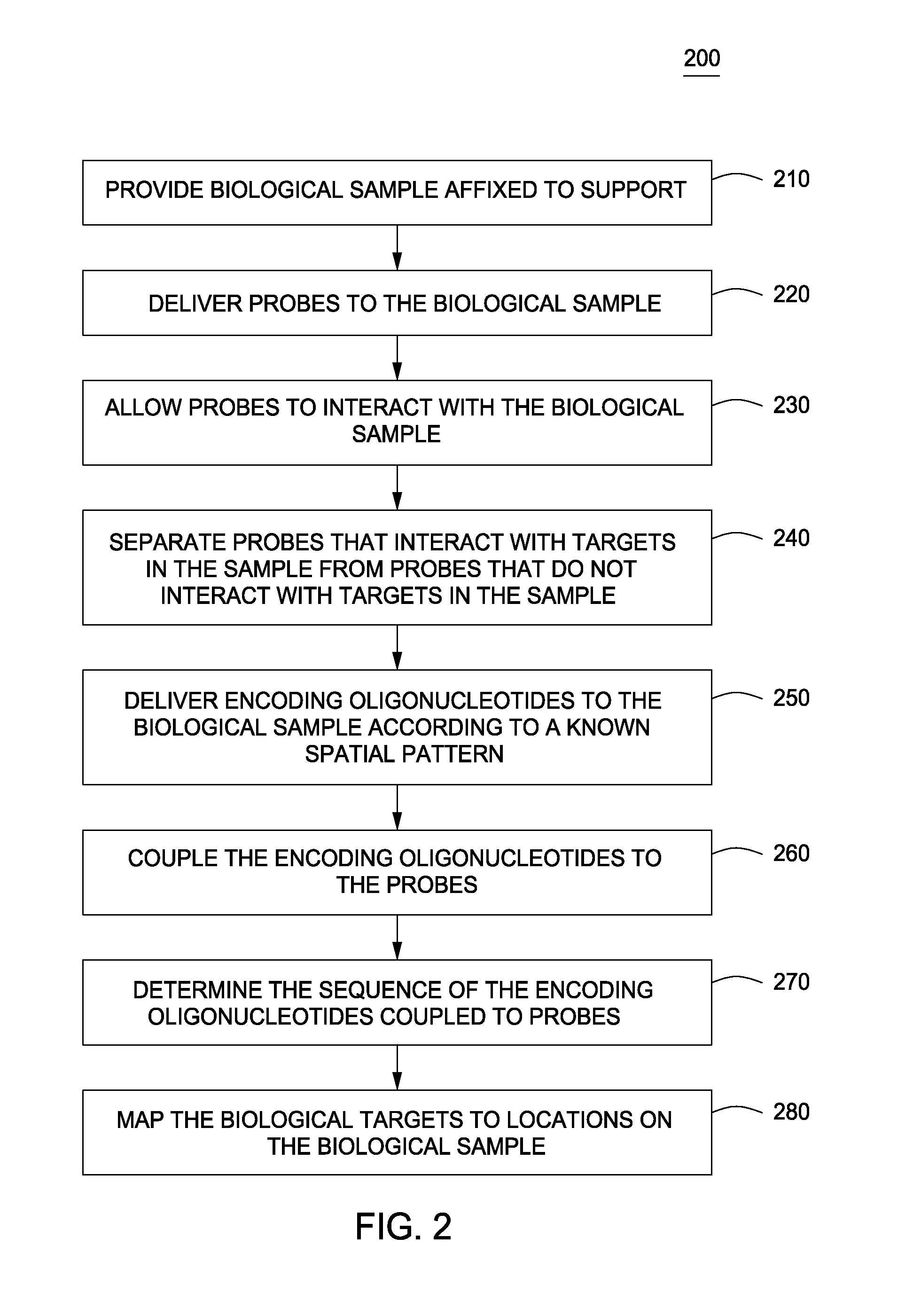Spatially encoded biological assays
a technology of biological assays and spatial encoded data, which is applied in the field of biological assays, can solve the problems of low spatial resolution, high cost, laborious, and inability to enable simultaneous measurement of the expression of many genes or the presence and/or activity of multiple proteins at many spatial locations in a sample,
- Summary
- Abstract
- Description
- Claims
- Application Information
AI Technical Summary
Benefits of technology
Problems solved by technology
Method used
Image
Examples
example 1
Initial Proof of Concept of Encoding Scheme
[0094]As an initial proof of concept, a model system is developed using a microarray to demonstrate a working single-plex assay. The basic design validates the concept of the assay, and establishes a working assay prior to addressing issues related to the analysis of a more complicated biological sample. Conventional sequencing is used as a readout for this proof of concept.
[0095]A microarray is used as a proxy for a tissue section. The target sequences of the microarray are fully specified, so that the composition of the targets are known and can be varied systematically. Synthetic oligonucleotide templates are attached to a glass slide via a 5′ amino modification. Each slide has a single oligonucleotide template sequence, and the assays that are carried out may employ either ligation, or extension followed by ligation as this may be useful in determining certain polymorphisms.
[0096]Once the in situ part of the assay is complete, the react...
example 2
[0097]The complexity of the assay system is increased to establish scalability of the assay for use in high throughput studies. Scalability of both the spatial encoding and assay systems is demonstrated by carrying out a 24-plex×24-site assay using a microarray model system.
[0098]The amount of biological target, here a DNA target sequence, at each assay location is systematically varied on microarray substrate. For example, in a microarray with 50 micron spot size (center to center), a 1 mm2 area contains ˜400 spots. The region around each site is optionally occupied by a region that is devoid of these spots to allow individual resolvability of the target sequences. Alternatively, the spots may be clustered, with two or more directly adjacent spots surrounded by or adjacent to a region that is devoid of target sequences.
[0099]In order to demonstrate that spatial encoding is accurate, the sites comprise different target compositions to show that the assay readout matches t...
example 3
Adaptation of the Assay to Preserved Samples
[0102]Genomic DNA is assayed as a proof of concept for assaying RNA, as it provides a way to establish a single-copy reference signal. Once a working assay is developed for FFPE samples, it is adapted to an RNA assay. To this end, assay oligonucleotide concentrations are assayed to ensure compatibility with high multiplexing. Assuming a cell diameter of 10 microns, and delivery of a 10 micron diameter reagent droplet to an individual cell, the volume of the droplet will be ˜500 μl and can contain ˜3×1011 molecules at a 1 μM concentration. To assay 1,000 target sequences in 10,000 cells, ˜2,000 targeting oligonucleotides would be required in a droplet. Therefore, each droplet could contain ˜160 million copies of each assay oligo, a vast excess over the few thousand target sequences in a cell.
[0103]The handling of small absolute numbers of product molecules generated from very small or compromised samples are enhanced to counter the issue of...
PUM
| Property | Measurement | Unit |
|---|---|---|
| temperatures | aaaaa | aaaaa |
| temperatures | aaaaa | aaaaa |
| temperatures | aaaaa | aaaaa |
Abstract
Description
Claims
Application Information
 Login to View More
Login to View More - R&D
- Intellectual Property
- Life Sciences
- Materials
- Tech Scout
- Unparalleled Data Quality
- Higher Quality Content
- 60% Fewer Hallucinations
Browse by: Latest US Patents, China's latest patents, Technical Efficacy Thesaurus, Application Domain, Technology Topic, Popular Technical Reports.
© 2025 PatSnap. All rights reserved.Legal|Privacy policy|Modern Slavery Act Transparency Statement|Sitemap|About US| Contact US: help@patsnap.com



